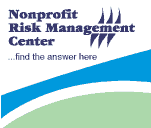|
August 29, 2007
Protecting Workers Who Are Victims of Domestic Violence
By Jennifer Chandler Hauge
Scene: Your nonprofit.
Situation: The phone rings. Your administrative assistant tells you she/he is not coming in today.
This isn’t the first time this has happened. This employee has missed a few days here and there due to “illness” or “doctors visits,” but this is the first time she/he has been absent with no reason provided.
You’re running a small nonprofit and every absence is a day of lost productivity. Perhaps this employee has used every day of accrued leave for which she/he is eligible. You think it’s time to have a serious sit-down to let this employee know that these absences are no longer tolerable.
Domestic violence may not leap immediately to mind. Then she/he tells you: “My partner hit me.” or “My child’s being abused.” You have just discovered that your employee is a victim of domestic violence. What do you do?
If it hasn’t happened at your nonprofit yet, feel lucky. Domestic violence spills over into the workplace in the form of reduced productivity, increased absenteeism, and enhanced risk of violence at work. Recent studies tell us that annually in the United States, 503,485 women are stalked by an intimate partner. Nearly one-third of American women (31 percent) report being physically or sexually abused by a husband or boyfriend at some point in their lives; yet men are victims, too. Given the likelihood of one of your organization’s employees being a victim of domestic violence, developing straightforward policies to assist and protect victims of domestic violence is a prudent consideration for any nonprofit.
Know your nonprofit’s leave policies: Victims of domestic violence may be eligible for family/medical leave under your nonprofit’s own policies. In some states, victims of domestic violence are provided a special leave of absence from work to attend court proceedings, serve as a witness, get a restraining order or attend to any other personal or medical business needed as a result of the domestic abuse.
- The following states have special laws that provide for a leave of absence from work for victims of domestic violence: Arizona, California, Colorado, Florida, Hawaii, Illinois, Maine, Maryland, Minnesota, New York, New York City, North Carolina, and Rhode Island.
- The Nonprofit Risk Management’s newly updated resource on employment law for nonprofits, Taking the High Road, provides more details on these laws and what to look for when crafting policies on leaves of absence.
What can be done to increase safety and security at the workplace?
1. Confidentiality
- Respect the employee’s confidentiality and dignity at all times, while giving a limited number of employees with a “need to know” status enough information that they can help protect the employee-victim.
- Implement a confidentiality policy that does not permit disclosure of information about employees to third parties, and remind all employees that if anyone from outside the organization phones asking for the whereabouts of another employee, or requests the employee’s schedule or travel plans, the nonprofit is not at liberty to share that information. Remind employees to give their own family members their travel information because the employer will not give it out.
2. Emergency Contacts
- Ask the employee for the contact information of someone that the nonprofit should contact in an emergency.
- Make sure that the employee, you, and security personnel/front desk receptionist have ready access to a direct phone number to local law enforcement responsible for investigating domestic violence emergencies.
- When reporting the presence of an abuser, be sure to give the police
- a specific location
- a description of what the abuser is wearing
- the name of the victim and
- That there is either a court order restraining the abuser, or that your employee has reported to you that s/he is a victim of domestic violence.
3. Get expert advice
Invite a local nonprofit with expertise in domestic violence to come to your workplace to give a presentation on awareness and prevention to your staff. The national organization, the Family Violence Prevention Fund, www.endabuse.org, has tools to assist in workplace trainings to raise awareness about domestic violence.
4. Provide resources
Post a list of resources for victims of domestic violence in a visible place at your worksite.
What to do when you learn that an employee is a victim of domestic violence:
- If the employee has a court order restraining an abuser, encourage the employee to provide you with a copy of the court order, and carry it with him/her at all times.
- Ask for a recent photo of the abuser and alert all security personnel/front desk receptionists not to give that person access to the workplace.
- Encourage the employee to save as evidence any threatening emails, phone messages or other evidence that they are being stalked or harassed.
- Arrange for the victim to have priority parking close to the entrance of the worksite.
- Remove the employee’s name for automatic phone directories so that callers from the outside cannot bypass an operator to leave a message or speak with the employee-victim.
- Relocate the employee’s work station to a location away from stairwells or windows and in close proximity to others.
- Contact local law enforcement and ask for their advice on any other steps your workplace can take to minimize the risk of harm to your employee.
Resources
For more information on employment risk policies and procedures, you might like to attend one of these sessions at the 2007 Summit for the Nonprofit Sector in Winston-Salem, NC, October 24-26.
Or take an online 1-hour course with quizzes and a final test right at your computer.
Or review the online Preventing Workplace Violence Check List from Workplace Safety Is No Accident, An Employer's Online Toolkit to Protect Employees and Volunteers.
|



